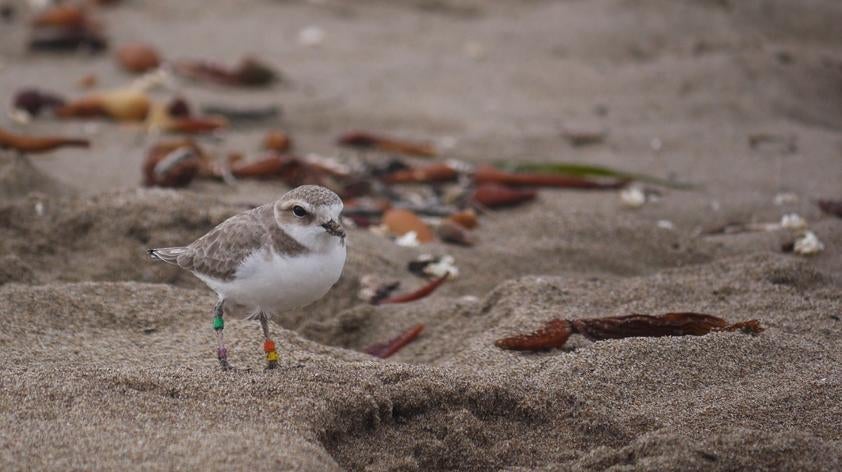
Plover treasures, hidden clues: Tales from the other end
When I joined the Institute for Conservation Research as a College Summer Fellow during the 2017 field season, I was placed with the San Diego Zoo Global Pacific Coast Bird Conservation team, who focus on the research and management of two federally-listed bird species: the Western Snowy Plover and the California Least Tern. For my fellowship research project, I was tasked with conducting a pilot study focusing on using plover scat as a tool for understanding diet.
Scat isn’t something people usually consider an exciting substance, and plover poop is about as unassuming as it gets. Nevertheless, samples were obtained in collaboration with the research teams working at Marine Corps Base Camp Pendleton and Naval Base Coronado.
Team members dutifully ran to collect the scat when they saw a plover defecate, labelling the bags with the date, location, and age of the bird. I took the first sample, mixed it with some alcohol to break down the solids, and popped it under a microscope. There, mixed in with the grains of sand, I found hundreds of microscopic pieces of insects. All that remained were bits of exoskeleton, too tough for the birds to digest. While invisible to the naked eye, many pieces were large enough to have distinguishing features. After many hours of consulting field guides and websites, I was able to identify most pieces down to taxonomic Order.
From there, I conducted statistical analyses to determine the taxonomic composition of each sample, and a preliminary look at how prey orders varied across samples from plovers at our sites. Coleoptera (beetles) and Diptera (flies) were the most common Orders found in samples from both sites, which supported results from a similar study published in 1999 by Mark Tucker and Abby Powell from plovers at Camp Pendleton.
However, there are limitations to this method. Plovers have been observed to consume soft-bodied invertebrates such as worms, which would be likely to be completely digested and wouldn’t show in the samples. Further down the road, we may have the opportunity to use DNA analyses to identify different prey groups in the scat. Until then, scat should be collected for analyses to help understand the diversity of plover diet, although for now, these may not provide the entire picture.
Being able to use fecal samples to further understand plover diet could aid in informing management practices. Researchers can discern how well a habitat type will support plover populations based on the invertebrates found there. Future studies can compare samples taken from various sites, providing information on the dynamics between different habitats, those invertebrate populations, and plover foraging and site preferences, and perhaps, provide insight into breeding success also.
Lastly, collecting fecal samples is a minimally-invasive method for gaining key diet information, and on temporal trends.
My story eventually comes full-circle when, in 2019, and again in 2020, I have returned to work for the Institute as a research assistant and to continue our plover and tern work at Camp Pendleton and Naval Base Coronado. While we do still collect fecal samples for future projects, typically it’s more of an opportunistic endeavor as we conduct our other studies.
Even though three years have passed since my fellowship, I still have to resist the urge to jump out of the truck with a collection bag every time I see a plover poop!
Elena Oey is a field Research Assistant with the SDZG Terns and Plovers Team (Pacific Coast Bird Conservation).













